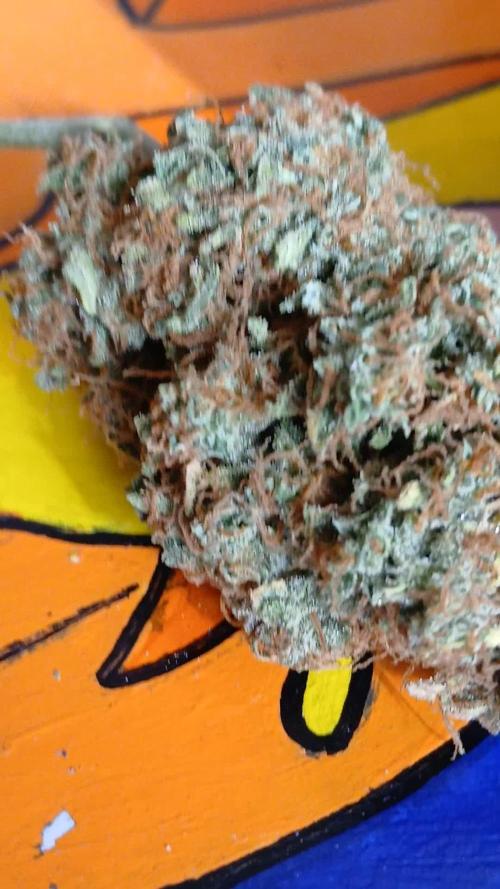The Grow Awards 2026 🏆 























Likes
13
Share


@HydroLab-Germany
Follow
*english version below*
**HydroLab – Blüte Woche 1:
Der Stretch entfesselt & der Teppich lebt**
Willkommen zurück im HydroLab, dem einzigen Ort, an dem Pflanzen schneller wachsen als meine Stromrechnung. Die 12/12-Umstellung liegt nun offiziell sieben Tage zurück – und die Damen haben das Memo verstanden. Der Stretch? Vollgas. Der angekündigte „Kräuterteppich“? Er ist da. Und er rollt sich gerade selbst aus. 🌿🔥
Systemstatus: Wissenschaftlicher Wahnsinn in Zahlen
EC: stabil auf 1.5
Wasser: Vollentsalzt, nur noch 0.05 EC – so sauber, dass es vermutlich als „Destillat Light“ durchgeht
CalMag: jetzt Pflicht! Leitungswasser war nett, aber wir gehen jetzt pro
pH: von 5.8 hochdriftend bis 6.2, dann korrigiere ich
Klima: kalt draußen → warm im Labor dank Luftentfeuchter + 130W IR-Heizung (Nachtschicht-Modus)
Operation „Wurzel-Schutzschild“
Die Netpots haben ein Upgrade bekommen:
Alufolie-Abdeckung!
Nicht hübsch, aber verhindert sicher, dass irgendwo Licht in die Root-Zone kommt.
(Hydrolab-Regel Nr. 18: Wenn’s reflektiert, funktioniert’s. 🤓)
Pflanzenverhalten: Unkontrollierte vertikale Energie
Ich habe in dieser Woche nichts geschnitten und die Mädels einfach machen lassen. Ergebnis:
🔬 Hypothese: „Sie werden etwas wachsen.“
🔬 Ergebnis: Sie sind komplett durchgedreht.
Der Stretch ist massiv, die Tops schießen überall nach oben, die Mitte wird dichter, und die ersten Blütenansätze zeigen sich bereits in voller, flauschiger Pracht. Die Mykos arbeiten im Untergrund weiter wie ein italienischer Straßenbau-Trupp auf Koffein: die Wurzeln sind dick, cremefarben und gesund.
Labor-Kommentar
Manchmal muss ein Wissenschaftler lernen, loszulassen.
Und manchmal heißt das:
„Ich lass sie einfach eine Woche wild wachsen und schaue später, was weg muss.“
Genau diese Methode wenden wir hier an.
Aktuell sieht alles brutal vital, extrem dicht und herrlich chaotisch aus – genau wie ein Sativa-Scrog aussehen muss, bevor der Dompteur eingreift.
Ausblick
Nächste Woche geht’s ans Feintuning im Netz, am Lollipop wird nachjustiert und Bud Blood sollte sein Zauberwerk tun, damit sich das Ganze bald in ein Meer aus weißen Härchen verwandelt.
Bis dahin:
Das HydroLab beobachtet, misst, lacht – und füttert.
🌱⚗️😄
_________________________________________________________
**HydroLab – Bloom Week 1:
Stretch Protocol Activated**
Welcome back to the HydroLab, where the plants grow faster than my ability to explain what’s going on, and where chaos is considered a valid research method.
The flip to 12/12 was seven days ago — and the ladies took that as a personal challenge.
The stretch?
Immediate and aggressive.
The “herbal carpet” I predicted last week?
Fully deployed.
🌡️ System Diagnostics
EC: holding steady at 1.5
Water: ultra-clean, 0.05 EC from the deionization unit
CalMag: now part of the baseline (unlike with tap water)
pH: adjusted to 5.8, drifting naturally up to 6.2 before correction
Climate: cold nights outside → warm enough inside thanks to a 130W IR heater + dehumidifier tag-team
🛡️ Root Protection Protocol
I covered the pot tops with aluminum foil — not pretty, but absolutely effective at blocking any stray light from entering the root zone.
HydroLab Law #7:
If it looks improvised but works perfectly, it’s not a bug — it’s a feature.
🌱 **Plant Behavior Report:
Unrestricted Vertical Ambition**
This week I didn’t cut anything…
And the plants responded with:
“Okay, we’ll take over now.”
The stretch is in full swing, tops are pushing upward everywhere, and the first flower sites are forming beautifully. The canopy is dense, lively, and wild — exactly what a sativa-leaning scrog looks like right before it becomes a jungle.
Roots?
A fluffy, creamy, active masterpiece.
The mycorrhiza is clearly having the time of its life.
🔬 Researcher’s Note
Sometimes science requires intervention.
Other times… science requires stepping back, folding your arms, and whispering:
“Let’s see what happens if I just don’t touch anything this week.”
This was one of those weeks.
And honestly?
The system handled it better than expected.
🔭 Next Week’s Outlook
canopy refinement begins
lollipopping adjustments
Bud Blood should fully kick in
floral development expected to accelerate
Until then:
The HydroLab observes. The HydroLab measures.
The HydroLab feeds.
And the HydroLab cackles quietly in the corner.
🌿⚗️😄
Likes
26
Share


@MG2009
Follow
03/05/2021
Beginning of week 4 looking good, I think she will start flowering in week 5-6, so I might top her, she is growing fast so I hope it will not harm flowering time.
Ps.
I did top
And 24 hours later I can see all is well, where I topped her is healing, and side branches responding! I know she will be ready for flowering.
Check out video and see.
Likes
189
Share


@Green_Man_420
Follow
Big shout to RQS and @James for the beans for this grow. Once again the genetics from these guys is unbelievable.
Really appreciate all the likes messages and support from you awesome bunch of growers. ✌️🙌💚
Week 9 is upon us. Loving the way this Mimosa is filling out. Really putting some weight on. The pics aren’t doing much justice. Will carry on feeding for another 2 weeks the start the flush. The colours are really starting to come through. I will monitor the progression closely now and let the plants tell me what they need. Have a great week people ✌️👊🏻
Likes
55
Share


@Max1973
Follow
Well, this was a interesting first journey.... the buds finished drying today, 5 days drying, added pics and vids.
Just curing to go.... ah nice buds :)
Edit: i forgot to mention i went over the buds when i harvested them, and checked / removed any impurities, like
gnats caught in the sticky bud.... picked em clean with tweezers... 👍
Edit: needed to air/dry out the buds abit more, and get some Boveda Humidipak for curing.... it's looking good...
i'll update with some pics of trimmed, cured buds 😎
The buds turned out beautiful, pungent, pine, berry, citrusy, daytime, medical..... this has theoretical 1:1 - 21% THC, 19% CBD, so it's not going to give u a knockout high.... its medical grade 1:1 ....... side effects - happy, relaxed.
haha :)
I weighed it dry and came up with about 123.32g (4.35oz) ... i used abit of guesswork in the weight, not to concerned with weight, as to
quality.... (that weight is with the test buds added in, +-15g.) .... you can guess the weight from the pics and vids, haha
I really enjoyed growing this.... i found the website by looking up the seeds, decided to start a grow diary,
it's my first grow, i made alot of mistakes and growdiaries really helped alot, joined a chat group with some other really good growers.
Edit - Day 111 - added vid/pic, Been curing for a week, burp and roll em abit twice a day....... smell and taste nicer each day, 👍
Edit - Day 112 - added good vid of trimmed up test bud, beautiful ......
I hope You enjoyed the Diary..... Good Buds 😎
Likes
4
Share


@kdifiori_
Follow
This adventure is over too. This little girl took longer than all the others, she had her problems growing up, but in the end, with a little patience, she gave excellent results! The flowers smell strongly of diesel, which immediately hits the nose, and there are hints of lemon. Not too dense, but I'm happy nonetheless. The adventure is over, and we're already ready for the next one!
Likes
19
Share


@EmeraldLakeCannabis
Follow
It's been a pretty good week. Carl 2 stretched out like a motherfucker, nearly a four inch stretch as of today. The accidental topping due to blunt trauma a while ago seems to have stopped the stunted growth and allowed it to really shoot upwards and outwards. The split on UKBS 2 is still necrotic, and the effects seem to be travelling down the stem. I have a fan on it for airflow and I'm hitting it twice daily with a vinegar solution to try and kill off what seems to be white mold in the stem. As of recently the spread has slowed down somewhat, so I'm feeling hopeful. Next feeding it'll get hit with another round of nature's candy and velokelp to try and build some strength back up and come out a real winner in 3 months or so.
The tent has been flipped to 12/12, but the outdoor plants wont be flowering for another 3 months-ish minimum, so this diary's gonna get a little interesting in terms of week type. Carl 1 is incredibly stretchy inside the tent, almost 6 maybe 8 inches from when I flipped and Scrogged. Gave Carl 1 a fat haircut a couple days ago, she reacted quite well.
Updates will come throughout the week. Happy growing and thanks for checking out the grow.
By 5/11/2021 - I've acquired some peroxide to try and assist UKBS 2 with the mold/pathogen issue. The previous night's application seemed to work, and I applied again today. Hopefully she'll pull through. One of the main stems is drooping massively, I may lose it but hopefully not.
Processing
Likes
1
Share


@IMILYSETPOSR
Follow
1st week
2nd day - Gelato popped through, removed water bottle. Swapped intake and exhaust fans about to get new fresh air from outside. Used diffuser to raise humidity and ice cubes to lower temp. Intake running on full, exhaust at 70%.
Cookies popped through. Removed water bottle. Misted tent and lightly top watered. Intake at 70, exhaust at 50 for overnight. Diffuser to hold humidity.
Day 5 - First watering - 1l ph water each. Misting tent throughout day.
Day 6 - Added 180mm cyclone fan for air movement. Removed runoff. Both seedlings doing well. Slightly further development on cookies.
Processing
Likes
5
Share


@Andres
Follow
she grows well and healthy ... we will see in the course of the weeks ....
Likes
8
Share


@eldruida_lamota
Follow
Que pasa familia, vamos con la segunda semana de floración de estás Zkittelz de Seeds Mafia.
La humedad está entorno al 50%,y la temperatura la tengo entre los 22/24 grados.
Controlamos en ph en cada riego a 6.2.
Y el agua que utilizo de riego suele estar estancada entre 24 / 36 horas.
Cambie el fotoperiodo a 12 horas, hasta aquí todo bien, tienen un buen color, ya van progresando y creciendo a buen ritmo, vemos cómo avanzan estas semanas y como avanza el progreso de las flores.
Mars hydro:
Code discount: EL420
https://www.mars-hydro.com/
Agrobeta:
https://www.agrobeta.com/agrobetatiendaonline/36-abonos-canamo
Hasta aquí todo, Buenos humos 💨💨💨
Likes
4
Share


@LittleBigTrees
Follow
So we're in week 3 veg , they've mostly outgrown their mutated leaves now and looking strong.
Likes
16
Share


@Reddgrower
Follow
Got everything hung up. Stripped the fan leaves and broke down into sections. Run 60/60 or as close as i can get until the stems snap.
Likes
7
Share


@XoticGROW666
Follow
🍨🍧🌈🍭🍬
Pheno B is more candy gelato terps smell & taste🍨🍧🍬
Pheno A is more butter candy bread terps smell & taste 🍞🥐🍬

































